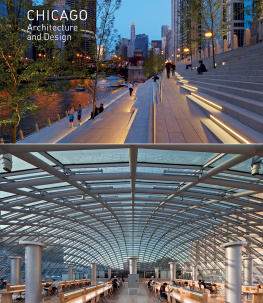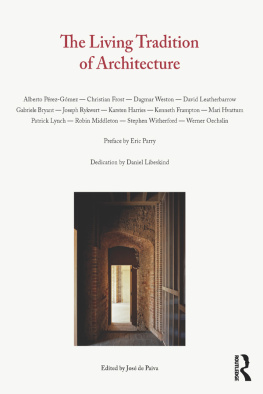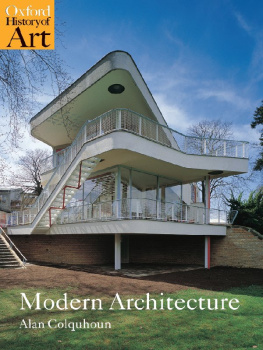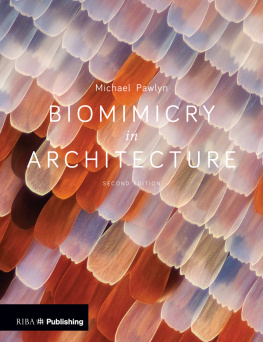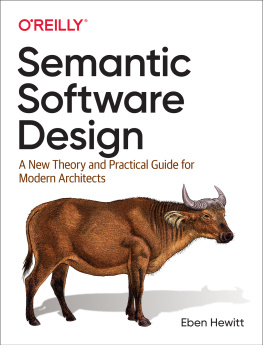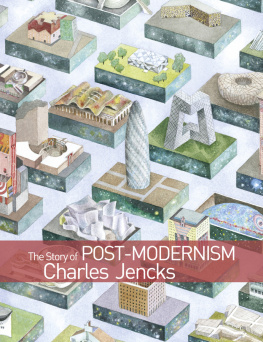


Engraving of Paris showing the newly erected Arc de Triomphe, completed in 1836 and designed by Jean Chalgrin, and in the foreground workers demolishing C.-N. Ledouxs Barrire de lEtoile of 178589.

About the author
Kenneth Frampton was born in 1930 and trained as an architect at the Architectural Association School of Architecture, London. He has taught at a number of leading institutions in the field, including the Royal College of Art in London, the ETH in Zurich, the Berlage Institute in Amsterdam, EPFL in Lausanne and the Accademia di Architettura in Mendrisio. From 1972 to 2019 he served as Ware Professor of Architecture at the Graduate School of Architecture, Planning and Preservation, Columbia University, New York. He is the author of numerous essays on modern and contemporary architecture, has served on many international juries for architectural awards and building commissions, and is a member of the American Academy of Arts and Letters. In 2018 he was awarded the Golden Lion of the Venice Biennale. His publications include Studies in Tectonic Culture (1992), Labour, Work and Architecture (2005), American Masterworks (2008), Kengo Kuma: Complete Works (2012) and A Genealogy of Modern Architecture (2013).
Contents
It is indeed unfortunate that human society should encounter such burning problems just when it has become materially impossible to make heard the least objection to the language of the commodity; just when power quite rightly because it is shielded by the spectacle from having to take responsibility for its delirious decisions believes that it no longer needs to think; and indeed can no longer think.
To attempt to expand on an account of the evolution of the Modern Movement in architecture at the time of writing is a contradictory and disturbing experience. While the level of professional talent and skill in the field is higher today, worldwide, than at any other moment in history, at the same time the world enters ever more deeply into a confused state of total political paralysis, so much so that one is reluctantly drawn to conclude that the human species no longer has the capacity to act in its own best interests. At the micro-level, the techno-scientific division of labour is such that we are able to penetrate ever more deeply into the mysteries of nature, but simultaneously we are the perennial victims of a triumphant globalized capitalism through which, at the macro-level, we are locked in a titanic struggle with a rebarbative nature, which is now already beyond our control.
The impasse of escalating climate change, which was already a fact when the fourth edition of this history was published in 2007, is ever more apparent today as we encounter the worldwide crisis of democracy and the accompanying hysteria of populist political reaction. Given that this was already essentially the state of things at the millennium, I have elected to the eliminate the penultimate chapter of the fourth edition and to expand its content into a new Part IV, under virtually the same title, World Architecture and the Modern Movement. Accordingly, the last chapter of the fourth edition, entitled Architecture in the Age of Globalization, has been kept in place as a coda to the fifth edition, carrying essentially the same content save for certain material that has been absorbed into Part IV.
I began work on this history in 1970, when the idea of the Modern Movement was still current on the London architectural scene despite the fact that, unknown at the time, the term Modern Movement (Moderne Bewegung) had first appeared in Otto Wagners book Moderne Architektur (1896). While the term appears throughout the various editions of his book, the title of the last edition, of 1914, was discreetly changed to Die Baukunst unserer Zeit (The Architecture of our Time). Throughout the numerous accounts of the evolution of the Modern Movement in architecture, there is a divide between authors who prefer to allude to a specific time period and others, like myself, who, possibly because they have had an architectural formation, prefer to allude to the Modern Movement in the same way as the Italian architect-historian Leonardo Benevolo, whose two-volume Storia dellarchitettura moderna of 1960, which was first published in English a decade later, specifically alluded to the Modern Movement in the subtitle of his second volume. Nevertheless, as we pass from Gustav Adolf Platzs pioneering Die Baukunst der neuesten Zeit (Building in our Time) of 1927 to Sigfried Giedions Space, Time and Architecture of 1941, to Arnold Whitticks European Architecture in the 20th Century of 1950 and finally to Reyner Banhams Theory and Design in the First Machine Age of 1960, we notice that the association of architecture with modernity is discreetly avoided, and likewise there is no reference to the Modern Movement in an avant-gardist sense of that term. In this fifth edition, however, I have frequently had to return to the idea of the Modern Movement by alluding to the beginnings of a discernibly modern architecture in various parts of the world, under the decidedly open-ended title of World Architecture.
The term World Architecture was first coined by the China Architecture and Building Press in 2000, when it published its ambitious project of 1,000 significant buildings worldwide for the entire 20th century, which had been critically selected by ten regional committees. The work was published in ten volumes, one for each region, with the subtitle A Critical Mosaic 19002000. Something similar was attempted for the period of the millennium alone through Luis Fernndez-Galianos four-volume publication Atlas: Global Architecture circa 2000, issued in 2007 by the BBVA Foundation in Spain.
In the new Part IV of my unduly ambitious account, I have attempted to assemble, under the rubric of World Architecture, a synthesis between these two editorial operations. I have adopted Fernndez-Galianos approach of audaciously dividing the world into four transcontinental regions Europe, the Americas, Africa and the Middle East, and Asia and the Pacific while at the same time moving across the entire span of the 20th century to touch, however provisionally, not only on the beginnings of the Modern Movement in various parts of the world, but also on relatively recent developments where these appear to merit inclusion. I feel it is necessary to add that, however dated this may seem, the Modern Movement was once inseparable from the liberative modern project in the sense in which this was defined by the German philosopher and sociologist Jrgen Habermas, implying an ultimately socialist welfare state irrespective of the political ideology at a given instant in time and at a specific place.
Here an effort has been made to widen the scope of the book in order to redress the Eurocentric and transatlantic bias of previous editions of this history. However, it has not proved possible to be as comprehensive as the title of the new Part IV would suggest. One explanation is that there is a physical limit, beyond which the book becomes so thick and cumbersome that it no longer fulfils its fundamental role as a convenient reference work or textbook. The other limit is the embarrassing fact that, despite the best intentions of the author, no single person can possibly hope to cover the vast breadth and complexity of contemporary architecture as it exists today, irrespective of whether the focus is on the largely forgotten pioneering essays of the Modern Movement of the 1920s and 1930s, or the various socio-political and cultural developments that have taken place throughout the world over the last half-century.
Next page

